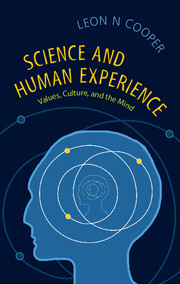Book contents
- Frontmatter
- Dedication
- Contents
- Preface
- Acknowledgement
- Part One Science and Society
- Part Two Thought and Consciousness
- Part Three On the Nature and Limits of Science
- 19 What Is a Good Theory?
- 20 Shall We Deconstruct Science?
- 21 Visible and Invisible in Physical Theory
- 22 Experience and Order
- 23 The Language of Physics: On the Role of Mathematics in Science
- 24 The Structure of Space
- 25 Superconductivity and Other Insoluble Problems
- References
25 - Superconductivity and Other Insoluble Problems
from Part Three - On the Nature and Limits of Science
Published online by Cambridge University Press: 05 November 2014
- Frontmatter
- Dedication
- Contents
- Preface
- Acknowledgement
- Part One Science and Society
- Part Two Thought and Consciousness
- Part Three On the Nature and Limits of Science
- 19 What Is a Good Theory?
- 20 Shall We Deconstruct Science?
- 21 Visible and Invisible in Physical Theory
- 22 Experience and Order
- 23 The Language of Physics: On the Role of Mathematics in Science
- 24 The Structure of Space
- 25 Superconductivity and Other Insoluble Problems
- References
Summary
Before they are solved, scientific problems often seem very difficult, perhaps impossible. But once they have been solved, the solutions sometimes seem obvious, even inevitable. But are there some scientific problems that are genuinely insoluble? If so, what are they? And how would we know?
On this fiftieth anniversary of BCS (Superconductivity, not the Bowl Championship Series) it's hard to recapture the very great difficulty (even conjectured insolubility) this problem appeared to present just half a century ago. Many of the greatest names in physics had tried or were trying their hand – Einstein, Bohr, Heisenberg, and Feynman, among many others. The contrast between then (impossible) and now (safely ensconced in textbooks) leads me to reflect a bit about problems, past and present, thought to be insoluble.
Problems are thought to be insoluble for different reasons: it may be too soon, as Newton's attempts to understand the properties of matter, or Einstein's 1922 attempt to construct a theory of superconductivity before a quantum theory of metals was in place. It maybe that existing science does not contain the solution – a new postulate or law of nature is required, as Max Planck's 1901 quantum hypothesis. Or might it sometimes be that no solution is possible? Put another way: Are there limits to what we can understand? Are there limits to science as we do it? Are some questions inaccessible to human intellect?
- Type
- Chapter
- Information
- Science and Human ExperienceValues, Culture, and the Mind, pp. 218 - 224Publisher: Cambridge University PressPrint publication year: 2014



